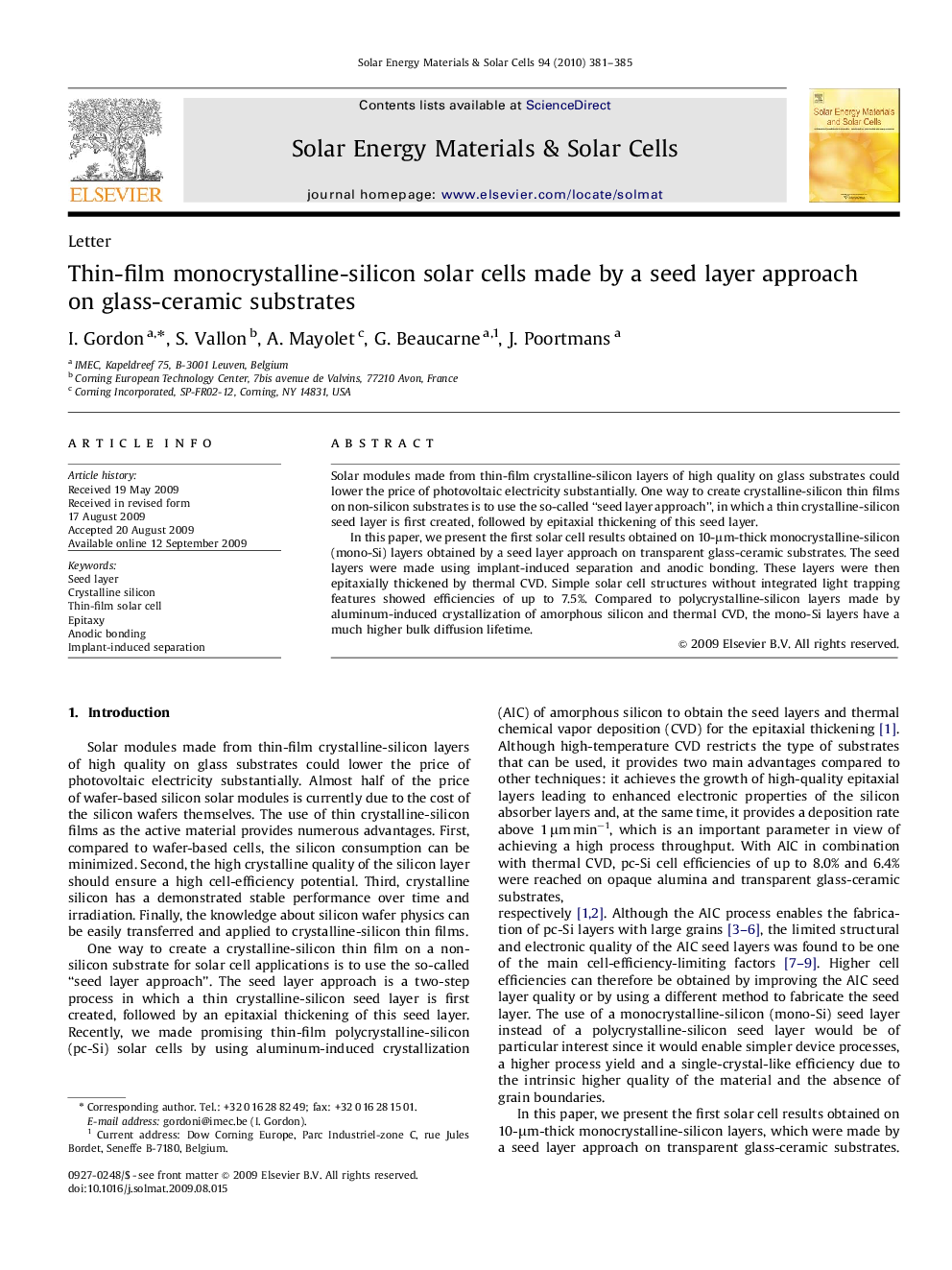| Article ID | Journal | Published Year | Pages | File Type |
|---|---|---|---|---|
| 80294 | Solar Energy Materials and Solar Cells | 2010 | 5 Pages |
Solar modules made from thin-film crystalline-silicon layers of high quality on glass substrates could lower the price of photovoltaic electricity substantially. One way to create crystalline-silicon thin films on non-silicon substrates is to use the so-called “seed layer approach”, in which a thin crystalline-silicon seed layer is first created, followed by epitaxial thickening of this seed layer.In this paper, we present the first solar cell results obtained on 10-μm-thick monocrystalline-silicon (mono-Si) layers obtained by a seed layer approach on transparent glass-ceramic substrates. The seed layers were made using implant-induced separation and anodic bonding. These layers were then epitaxially thickened by thermal CVD. Simple solar cell structures without integrated light trapping features showed efficiencies of up to 7.5%. Compared to polycrystalline-silicon layers made by aluminum-induced crystallization of amorphous silicon and thermal CVD, the mono-Si layers have a much higher bulk diffusion lifetime.
